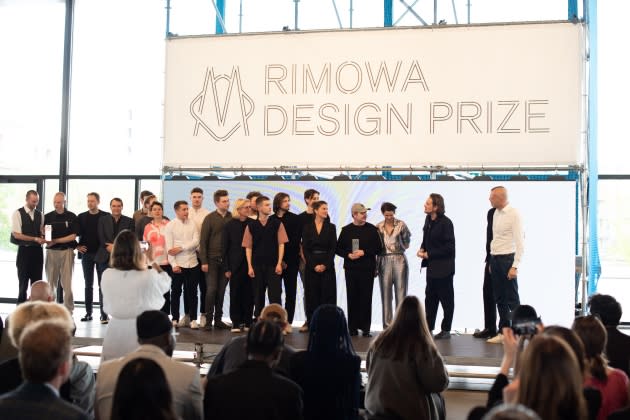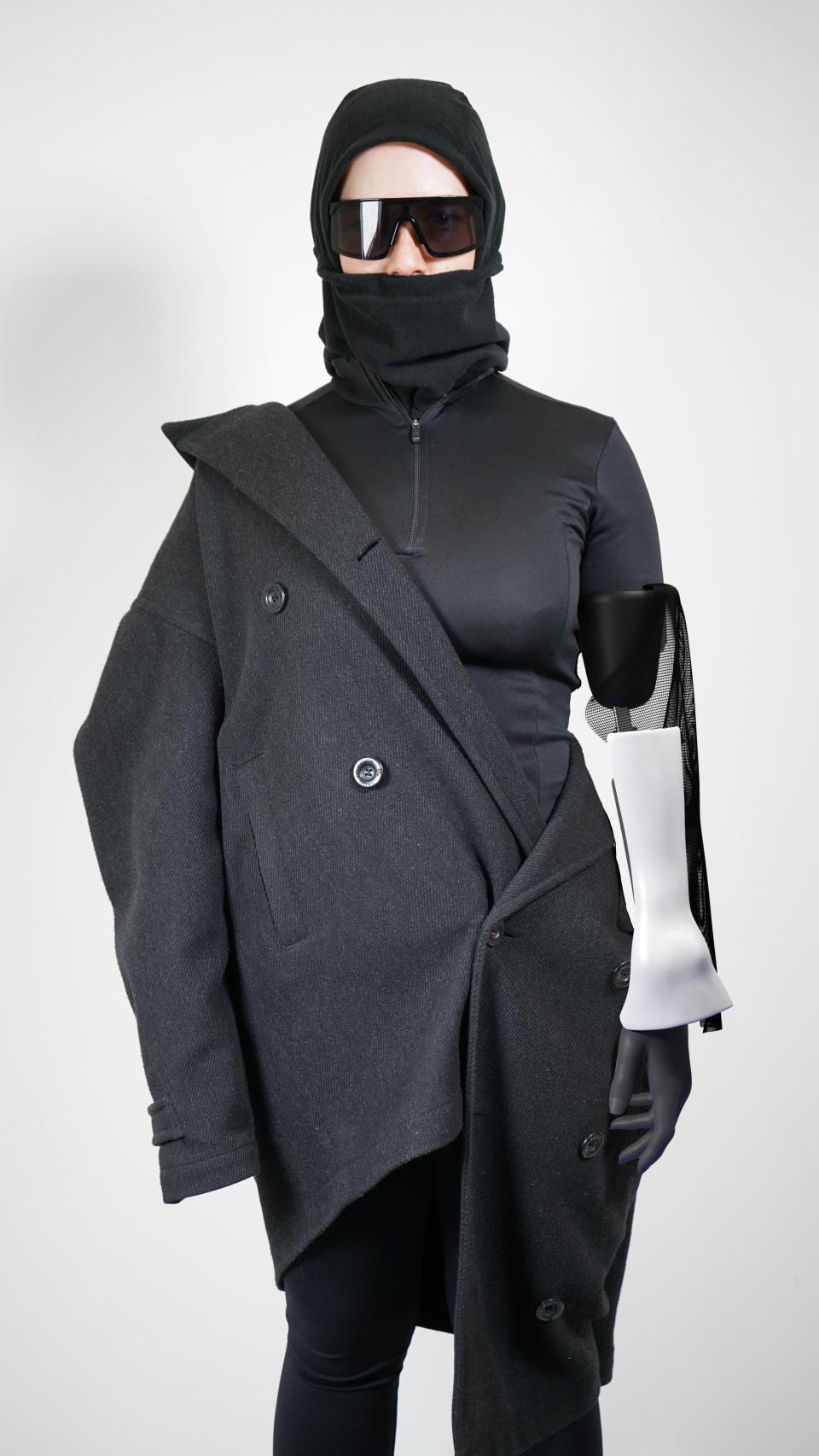Inaugural Rimowa Design Prize Awarded in Berlin
- Oops!Something went wrong.Please try again later.

It was the perfect location to present the first student design prize in Germany to be sponsored by luxury luggage maker Rimowa: The Neue Nationalgalerie, an art museum in central Berlin, is an architectural icon designed by legendary German-American architect, Ludwig Mies van der Rohe.
The museum, whose name translates to “new national gallery,” reflects what Mies van der Rohe was known for: Minimalism, clarity and simplicity, with function guiding form and following the adage the trend-setting architect was best known for — “less is more.”
More from WWD
And that’s what German design in general tends to be known for, Rimowa’s chief executive officer Hugues Bonnet-Masimbert told WWD at the event, which was attended by several hundred guests, a mixture of young design students in their best hipster black and local design industry luminaries.
The best design of any kind, from any country, typically has many of the same attributes, Bonnet-Masimbert continued. “But the weight that is placed on each attribute is different,” he said. “In German design, the weight is placed on function and usefulness. It’s extremely important. There is a lot of thought given as to why [a certain design is the way it is] and a real notion of no unnecessary additions. Although we had a broad range of projects in the competition, it was very clear to me that we had this [German] feeling across all of them,” he added.
This is the first time the Cologne-based luggage brand has held a design contest for German students. But perhaps it’s not surprising. Rimowa’s parent company, LVMH Moët Hennessy Louis Vuitton, has run an annual fashion design competition, the LVMH prize, for a decade now, and since 2016, another stablemate, Loewe, has regularly organized a contest seeking out the most skilled, distinctive handcrafts.
Of course, Rimowa will benefit from the added market profile brought by this new design prize, Bonnet-Masimbert confirmed. And the company also appreciates the introduction to new talent and fresh ideas. But that’s not really what this new design prize is about, he said. “On the whole, this was really more of a giving back kind of event,” Bonnet-Masimbert noted. “The principle is that we act as a canvas for their creativity.”
Rimowa’s inaugural German design prize ran from October last year until its conclusion this week. At the start of the process, 16 universities from around the country were invited to take part, submitting entries to suit the competition’s theme, mobility.
Mobility “is a key element of Rimowa’s ethos,” a statement from the company explained. The new annual contest is to be “an initiative that converts potential into tangible projects, that have a lasting impact on global issues.”
Dozens of entries were eventually whittled down to just seven by a jury of local design luminaries, accompanied by both Bonnet-Masimbert and Rimowa’s non-executive chairman, Alexandre Arnault. The latter — Rimowa’s former CEO but now an executive at Tiffany & Co., since January 2021 when Bonnet-Masimbert took over — was supposed to attend the ceremony in Berlin but was waylaid by work in New York and made a video statement, which was broadcast to guests.
Each of the seven finalists were mentored by a local, senior design talent and then, Monday afternoon in Berlin, their prototypes were displayed in the luminous main hall of the Neue Nationalgalerie.
In a brief awards ceremony, student designer Noa Grgic was announced the winner of Rimowa’s 20,000 euro ($21,697) prize. The six other finalists also receive cash prizes, ranging from 5,000 to 10,000 euros.

Inspired by the Japanese art of “kintsugi” — where broken objects, often ceramics, are joined back together with gold lacquer — Grgic’s project was called Artificial Body Positivity.
“Although the theme was mobility, I didn’t want to do anything typical, like an e-scooter, or something,” he explained to WWD after his win was announced. “I was thinking about it in a bigger sense.”
For people who must use prosthetics because of a disability, regaining their mobility is a huge achievement. But at the same time, around a third say they continue to be depressed or otherwise badly impacted by the fact that they must use a prosthetic, Grgic said. His project allows amputees to design or customize their own prosthetics.
“If you look at kintsugi, it’s so bold [about what’s been broken], it’s a statement,” he told WWD. “The ultimate goal would be to get people with no prosthetics to be inspired by people with prosthetics.”
“To create an object of desire that would even be desired by people who are not disabled,” jury member Gesa Hansen, a Danish-German furniture designer based in Paris, behind the brand The Hansen Family, confirmed. It was this shift in the thinking that saw Grgic awarded the top prize, she explained, because it was all about mobility in every sense and it was inclusive too.
Grgic, who attends the State Academy of Fine Arts in Stuttgart, has another three years at least in tertiary education to go, but he plans to invest the Rimowa prize money in working further on his prototypes.
Launch Gallery: Rimowa Design Award in Germany
Best of WWD

